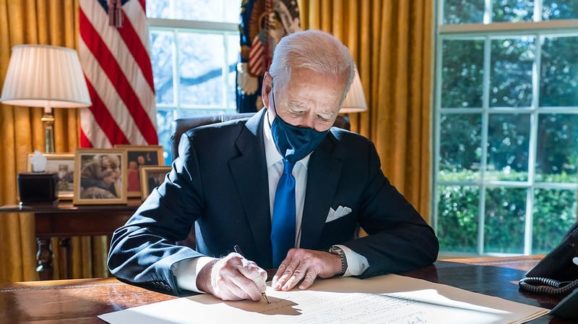It Takes Lots of Permits to Save the Planet
Every new energy project has to go through a convoluted and unpredictable federal approval process.
President Biden’s infrastructure plan proposes to spend trillions of dollars toward achieving zero greenhouse emissions by 2050. It won’t reach that goal, for two reasons. First, Democrats refuse to accept that natural gas and nuclear power have to be part of any green-energy plan. Second and even more daunting, every new energy project has to go through the same federal approval process as any other infrastructure project—a process so convoluted, costly, time-consuming and unpredictable that it’s a wonder any infrastructure project gets built in America. Many don’t.
The system requires every agency with authority over a project to grant a separate permit after an independent environmental review. Project sponsors routinely spend hundreds of millions of dollars without knowing when or whether a decision will ever be made.
As lawmakers prepare to spend trillions, they should ponder that the government wouldn’t have to spend an additional cent on infrastructure if the permit-review system were rational. There is a vast supply of capital in the private economy for infrastructure projects, including the many renewable-energy projects that show a positive return on investment given subsidies that already exist.
Tucked away in the transportation section of Mr. Biden’s infrastructure plan is a pledge to “use smart, coordinated infrastructure permitting to expedite federal decisions while prioritizing stakeholder engagement, community consultation, and maximizing equity, health, and environmental benefits.” Actual reforms to bring that about should have been the focus of the plan.
Mr. Biden could build on his predecessors’ work. When red tape made a mockery of President Obama’s “shovel ready” projects, he reacted by signing the Fixing America’s Surface Transportation Act of 2015, which created a single “permitting dashboard” for the biggest projects. President Trump further streamlined the process with his One Federal Decision executive order and by updating environmental reviews under the National Environmental Policy Act. But ultimately only Congress can fix a broken system.
Read the full article at The Wall Street Journal.
